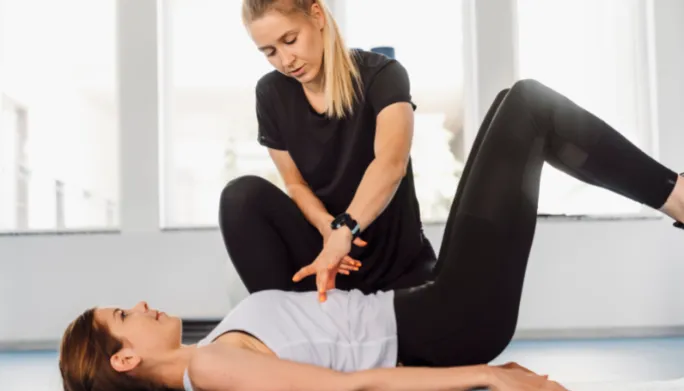Ervin PT
Bladder Dysfunction IN Morganfield
What is Bladder Dysfunction?
Bladder dysfunction is a general term used to describe a range of bladder-related problems that can affect both men and women of all ages. These problems can include urinary incontinence, frequency, urgency, and difficulty emptying the bladder. Fortunately, physical therapy can provide effective solutions to help manage and treat it, improving the overall health and wellbeing of those affected.
It can be caused by a variety of factors, including age-related changes, neurological disorders, pregnancy and childbirth, obesity, and pelvic surgery. Other medical conditions such as urinary tract infections, prostate problems, and bladder cancer can also cause dysfunction.

How Can Physical Therapy in Morganfield Help?
Physical therapy is a highly effective treatment option. A trained physical therapist can work with patients to develop a personalized treatment plan that addresses their specific needs and goals.
Therapy may include a range of exercises and techniques designed to strengthen the pelvic floor muscles, improve bladder control, and reduce urinary incontinence. Patients may also be taught techniques to improve bladder emptying and reduce urgency.
Some of the most commonly used physical therapy techniques for bladder dysfunction include:
Kegel Exercises:
One of the most common techniques used to strengthen the pelvic floor muscles. These exercises involve contracting and relaxing the muscles that support the bladder and urethra, and can be done anywhere, anytime. Patients may be instructed to perform a specific number of Kegel exercises each day, gradually increasing the number of repetitions and duration of each contraction over time.
Biofeedback:
This technique involves the use of specialized equipment to measure and provide visual or auditory feedback on the patient’s pelvic floor muscle activity. This feedback can help patients learn how to control these muscles more effectively, which can improve bladder control and reduce urinary incontinence.
Bladder Retraining:
Involves establishing a regular pattern of voiding to reduce urgency and frequency. Patients may be instructed to void at specific times throughout the day, gradually increasing the time between voids to help the bladder adapt to a more regular schedule.
Electrical Stimulation:
Involves the use of a low-level electrical current to stimulate the pelvic floor muscles, which can help to improve muscle strength and coordination.
Manual Therapy:
Uses techniques such as myofascial release and trigger point therapy may also be used to help reduce tension in the pelvic floor muscles, improving bladder function and reducing symptoms.
Physical therapists may also provide education on lifestyle modifications such as diet and fluid intake, as well as strategies to reduce stress and anxiety, which can exacerbate symptoms.
Treatment & What to Expect from Physical Therapy
Patients can expect a thorough evaluation from their therapist, which may include a review of their medical history, symptoms, and lifestyle habits. Based on this information, the physical therapist will develop a personalized treatment plan that addresses the patient’s specific needs and goals.
It’s important to note that the length of treatment can vary depending on the severity of the condition and the individual patient’s response to treatment. Patients should be prepared to commit to a consistent treatment plan, which may include regular appointments with their physical therapist, as well as home exercises and modifications to their daily routine.

Ready to Start? Contact Us In Morganfield!
Bladder dysfunction can be a challenging condition to live with, but physical therapy can provide effective solutions to help manage and treat its symptoms. With the help of a skilled physical therapist, patients can learn techniques to improve bladder control, reduce urinary incontinence, and improve their overall quality of life.
If you or someone you know is struggling, don’t hesitate to seek the help of a qualified physical therapist. With their expertise and guidance,you can take the first step towards better bladder health and a more comfortable, confident life.


